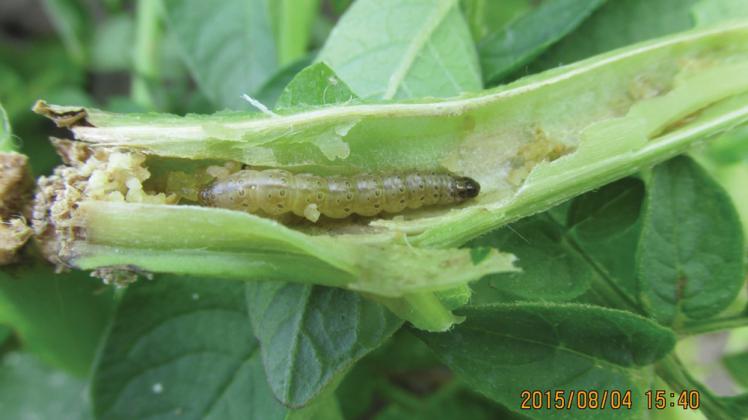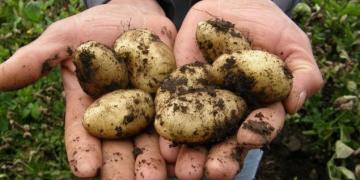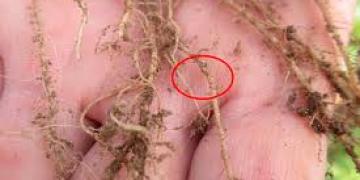Canadá: Corn borers develop taste for potatoes
Canadian potato growers found a new insect foe in the 2015 season — European corn borer. Ordinarily the pest prefers maize and other grain crops, but when conditions are right it will move on and hit other crops hard, including potatoes.

Ian MacRae, an extension entomologist at Minnesota’s Northwest Research and Outreach Center, told Manitoba Potato Production Days this January the effects aren’t pretty.
“When it hits potatoes it’s devastating — the young burrow into the stem in the potato, near a leaf axil, eating out the pith and vascular tissue, causing wilting or weakening the stem, lodging the plant so the leaf and stem fall down,” said MacRae. “And their entry points serve as sites for secondary infection.”
This route for disease infection has been associated with significant yield losses for potato growers hit with this pest.
Once corn borers are inside potato stems, control is very difficult, as few foliar insecticides are systemic.
In 2015, there were more reports of corn borers in Manitoban and northern U.S. potato crops than the previous several years.
MacRae believes the reasons are complex. Corn borer will utilize alternate hosts if preferred hosts are not available. For example, if nearby growers are using Bt corn resistant to pests.
In the 2015 season, environmental conditions were bad for natural predators of corn borer early in the year, allowing them a “start” which, left unsuppressed with timely foliar controls, led to severe infestations for some growers.
MacRae said the corn borer’s venture into other crops isn’t all that surprising, as more than 200 crops have been identified as potential hosts.
Scouting vital
Corn borers overwinter in the larval stage in host stalks and plant debris, MacRae said, pupating in the spring and emerging as adults in June. Moths tend to aggregate in weedy, marginal areas, with females entering fields to lay eggs, 15 to 20 at a time, on the undersides of leaves.
Knowledge of the corn borer’s life history is key to its management. Eggs hatch in five to seven days, forming dark “blackheads” just prior to hatching.
According to MacRae, this is the time for foliar insecticide application.
“The insect lays eggs in a raft, but the larvae have a very dark head capsule,” he said. “When the eggs start to turn black they’re very close to hatching. When you make an application at this point, the eggs will hatch in the next couple of days, and the residual in an insecticide will give you a measure of control.”
Neonicotinoids (exluding imidacloprid, which doesn’t have much of an effect) and diamides can be effective, as well as “softer” chemistries such as Spinosad, which are easier on predators, he said.
Because the timeline for insecticide application is so limited, scouting is key.
MacRae said the eggs are easy to scout for, and growers can’t mistake the characteristic “blackheads” of eggs close to hatching. Growers should look for infested stems, examining leaf axils and petioles for larvae and entry holes.
“Scouting is incredibly important with this insect,” he said.
His team has found some success using pheromone trapping as a scouting technique. But he cautions that while pheromone traps might offer one indication of projected populations, they don’t tell the whole story.
“If you get a high pheromone trap catch, this doesn’t mean you’ll necessarily have an outbreak of larvae,” he said. “A lot of things can happen from that time to egg hatch. Don’t use pheromone traps as an application trigger, but a scouting trigger.”
A variety of natural factors can take care of this pest before it becomes a problem in potato, including the weather. Heavy precipitation at egg hatch can cause some mortality, as well as low humidity, low nighttime temperatures and wind with heavy rain.
MacRae said growers should maximize natural mortality of the insect and decrease insecticide use. That will encourage predation of corn borer as eggs and young larvae by ladybird beetles and other predators and native parasitoids.
Fuente: http://www.manitobacooperator.ca/crops/corn-borers-develop-taste-for-potatoes/




